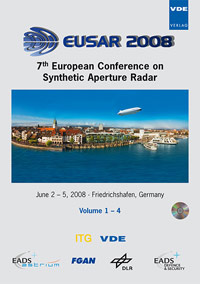Early Results In Forest Conditions From a Single-Pass L-Band Airborne PolInSAR System
Conference: EUSAR 2008 - 7th European Conference on Synthetic Aperture Radar
06/02/2008 - 06/05/2008 at Friedrichshafen, Germany
Proceedings: EUSAR 2008
Pages: 4Language: englishTyp: PDF
Personal VDE Members are entitled to a 10% discount on this title
Authors:
Mercer, Bryan; Zhang, Qiaoping; Wei, Ming; Coyne, Tim; Huang, Wei; Lumsdon, Parivash (Intermap Technologies Corp.,#1200, 555-4th Ave SW, Calgary, Canada, T2P3E7)
Schwaebisch, Marcus; Lang, Martin; Gopal, Sowmya (Intermap Technologies Gmbh, Heimeranstraße 35, 80339 München, Germany)
Abstract:
The creation of high quality Digital Surface Models (DSMs) using X-Band and C-Band InSAR is well established. However many applications require bare-earth Digital Terrain Models (DTMs) in the presence of forest canopy. L-Band is an attractive candidate, but the derived interferometric phase represents a combination of ground and volume scattering contributions from the canopy above. The use of PolInSAR techniques, and the Random Volume Over Ground (RVOG) Model has had considerable success in model inversion studies where the objective has been to extract tree height. A major problem for the robust application of this technique is the presence of temporal decorrelation, caused by the use of repeat-pass interferometry. In this paper we will present the first results obtained from tests in forested areas using an experimental airborne, single-pass, L-Band PolInSAR system. The primary objective will be to determine the quality of DTMs extracted beneath forest canopy in a range of forest conditions, in the absence of issues created by temporal decorrelation and uncompensated motion effects.


